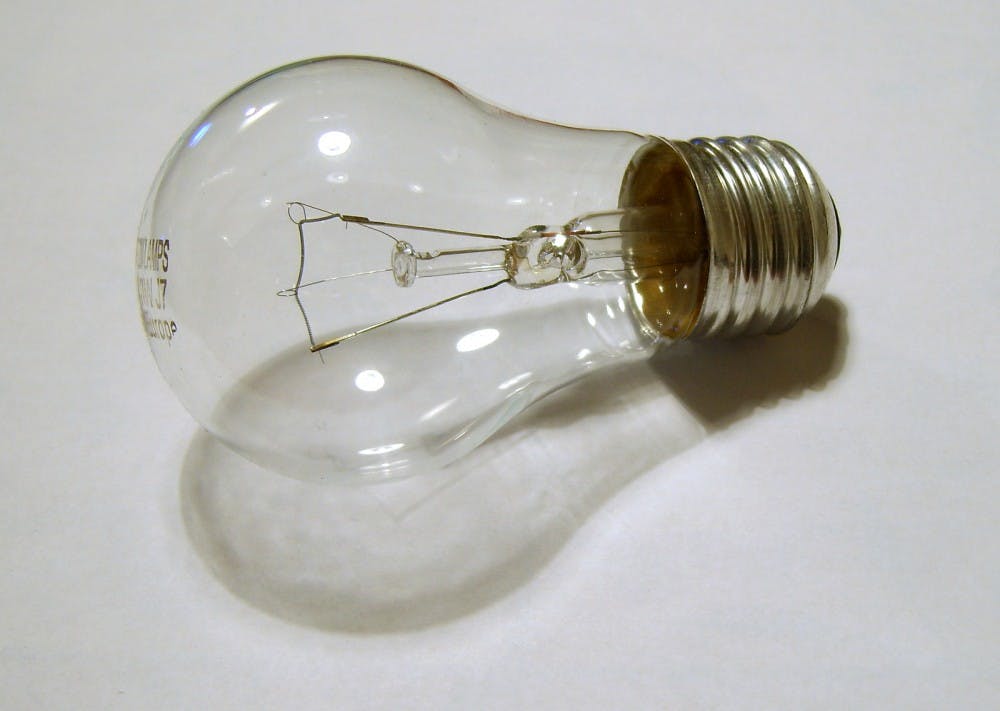By ADARSHA MALLA For The News-Letter
An art scientist and Back to the Future fanatic has utilized magnets to design a wireless levitating lightbulb that changes the way we view and use one of the most classic inventions in human history.
At a young age Simon Morris developed a strong interest in things that hover. Growing up during a time when Michael J. Fox skated through Hill Valley in the Back to the Future series, Morris fantasized about someday riding a hoverboard similar to the one that appeared later in the series. His passion for the physics behind hovering and magnetism led him to professional work that involving designing levitation displays for shoes, skateboards and speakers. During his time working on levitating different consumer products for exhibitions his lightbulb moment came. With only a few alterations in lightbulb design over 135 years, Morris decided that it was time for a change.
“I wanted to challenge this by offering a different perspective on an iconic symbol — the light bulb,” Morris told the Daily Mail.
Flyte is a low-power wireless LED lightbulb that hovers and rotates atop a wooden base using a series of magnets embedded in the base and lightbulb. Flyte is said to have a 22-year lifetime based on six hours of daily use.
While Morris is an expert at making items levitate, the real innovation with Flyte came in its ability to power the lightbulb wirelessly. The physics carrying Flyte forward is the principle of induction which states that an electromagnet with current running through it can remotely generate an electric field due to changes in its magnetic field. This generates current in a nearby body.
“The lightbulb contains a cap. Inside the cap is a magnet. Inside the magnet is a coil and that coil receives the electricity and powers the light. It is powering the light through the coil using magnetic levitation,” Morris told The Guardian. “It is simple, but in this kind of combination it has not been applied that often — levitation and induction. We are combining these two types of technologies.”
While Flyte raises the bar on our applications of magnetic levitation and electromagnets in everyday life, the device is notas functional as standard lightbulbs and lamps. While a standard 40-watt bulb gives off a brightness of about 450 lumens (the unit of measurement for light emitted by a source), the Flyte’s maximum brightness is 60 lumens. Priced at $299 per unit the Flyte system is also not particularly cheap. However the company has already received more than 2,300 pre-orders on the lightbulb system and has raised over $600,000 through its Kickstarter campaign.
Morris claims that while the lamp system is expensive for some people and may not provide the greatest amount of utility, the levitation and induction technology incorporated into the Flyte has great potential.
“The wow factor is that this lamp is levitating and it is not only levitating, but it is being powered through mid-air. It could definitely be considered expensive for some people but what we are trying to get is [to show] that this is what you can do. This is our first product but we can take it much further,” Morris told The Guardian.





